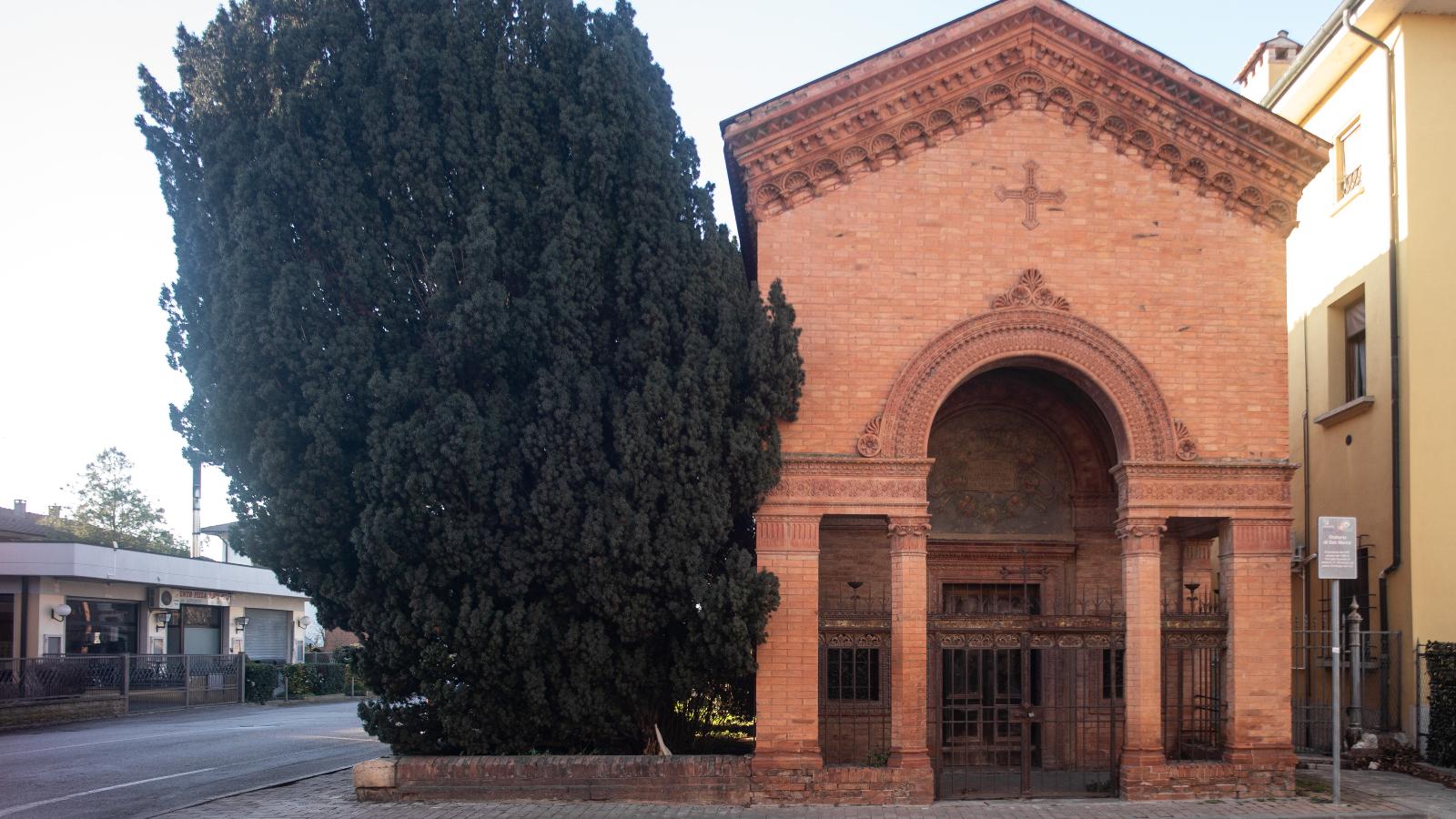Aemilia Ars in the Pianura Bolognese
Updated on 26 February 2020 From Bologna Welcome
Follow the trail of Bolognese art linked to the society founded by architect Alfonso Rubbiani. This route takes you north of the city to discover the gems of Aemilia Ars, tangible testimonies to a still-vibrant cultural legacy.
Founded in 1898, Aemilia Ars was an artistic and craft society inspired by the English Arts and Crafts movement but deeply rooted in Bologna’s cultural traditions. Its goal was to renew applied arts and craftsmanship by drawing on medieval and Renaissance styles, blended with the floral motifs of Art Nouveau. This approach profoundly marked early 20th-century Bolognese artistic identity.
Over time, Aemilia Ars became a school for master craftsmen and decorators renowned for combining beauty and function - work still celebrated today. This tradition is recognized under Bologna's De.Co. registry, a municipal label protecting notable local cultural expressions.
This ethos appeared in furniture, lace, jewelry, leather bindings, and everyday objects inspired by medieval designs, nature, and classical motifs, creating a signature style instantly recognizable today.
Aemilia Ars peaked with its participation in the 1902 Turin International Exhibition, where the Bologna pavilion was especially admired. Despite international acclaim, the society disbanded in 1903 due to financial challenges and a limited market. To preserve its legacy, only the lace and antique embroidery workshop continued, known for its elegant, classic style rooted in Bologna’s cultural heritage.
Start at Budrio’s Town Hall, which houses a grand staircase and council chamber decorated by Aemilia Ars artisans with floral, Art Nouveau motifs. Originally a noble residence and later a convent, it became municipal property in 1871. In 1879, it was drastically transformed: the tower was lowered and crowned with battlements, and the building was reinterpreted in a neo-Gothic style while preserving original window frames and historical ornaments.
Rubbiani, then a city councilor, personally designed the wooden furnishings, wrought-iron railings, and stained-glass windows. Painter Achille Casanova used hemp, symbolic of the local economy, as a floral motif behind the municipal and district shields. In 1895, a bust of Quirico Filopanti was placed above the entrance to the council chamber. In 1911, Giovanni Venturoli decorated the staircase walls with airy, Art Nouveau designs featuring Latin maxims about good governance and district coats of arms.

Continue to Bentivoglio, where you’ll find two architectural treasures:


Bentivoglio also hosts the “I Merletti di Antonilla Cantelli” Association, which keeps the tradition of Aemilia Ars lace-making alive through generations.
The route continues to Baricella’s Oratory of San Marco, also known as Cappella Zucchini. Designed as her husband’s funerary chapel, the brick building, decorated with neo-medieval terracotta, was created by painter Giuseppe De Col. It’s considered one of Aemilia Ars' finest examples of floral funerary art.
Inside, the walls are covered in symbolist floral frescoes, including a profusion of white poppies, emblems of eternal rest and death, consistent with the Art Nouveau aesthetic of Aemilia Ars. Zucchini’s ashes rest here, immortalizing a work that blends memory, beauty, and exquisite craftsmanship.

Heading back toward Bologna, visit Sala Bolognese’s Church of Santa Maria Annunziata and San Biagio, an important Romanesque-Lombard monument dating to 1096. Restored in 1920 by Giuseppe Rivani, a pupil of Rubbiani and part of the Aemilia Ars school, the renovation carefully respected its original forms while adding decorative elements in keeping with the movement’s aesthetic.
Here you’ll find one of the church’s most fascinating elements: the main altar carved from an ancient pagan altar, featuring the head of a horned deity overlaid with a Christian cross, symbolizing the transition from paganism to Christianity. A sculpted Swabian Imperial eagle decorates the pulpit railing. This historic, spiritual setting bears a permanent trace of the Aemilia Ars movement.

© Piergiorgio Sorgetti
To dive deeper into this captivating artistic and craft movement, visit Palazzo Pepoli - Museum of the History of Bologna, which includes a dedicated section on Aemilia Ars, featuring artistic works and archival documents.
Recognized as a center of popular Bolognese culture, Palazzo Pepoli hosts events and initiatives that promote local traditions and De.Co. recognized heritage. It’s a rare chance to rediscover Bologna’s artisanal and cultural roots through an artistic language that still speaks of beauty and identity.

Visit www.palazzopepoli.it to book your museum visit, explore upcoming events, and discover the spaces inside the Palazzo

